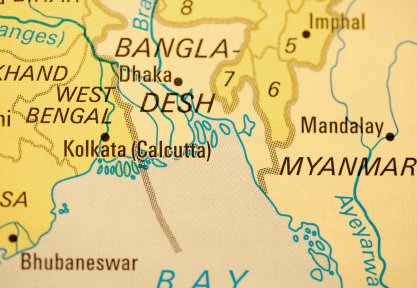
Substantial growth forecast for India’s textile and clothing industry
Myanmar’s clothing industry is forecast to grow significantly in the coming years, according to a new report from Textiles Intelligence.

4th April 2016
Knitting Industry
|
UK
Forecasters have predicted that there could be up to 1.5 million jobs in the garment industry by 2020 compared with approximately 230,000 in mid-2015, and that garment exports could rise from US$1.5 million in 2014 to as much as US$12 billion in 2020.
A turning point came on March 30, 2011, when a reformist president, Thein Sein, was sworn in as the leader of a military-civilian government and would be-investors and garment sourcing companies based in the West started to turn their attention to Myanmar. The first Western brand to source from Myanmar was H&M in 2013 followed by Gap in 2014 and these companies appear to have paved the way for others to follow.
Prior to 2011, Myanmar had been subject to 50 years of military rule which made it a very poor country, plagued by bureaucracy and corruption, and isolated by international sanctions. But most of the sanctions have been removed in recent years and many countries have granted free trade or preferential trade status to clothing made in Myanmar.
Furthermore, foreign direct investment (FDI) in the garment industry has been growing at an impressive pace in recent years and, following the removal of sanctions, clothing exports from Myanmar shot up by 26.5% in 2013 and by a further 27.4% in 2014.
To plan for expansion, the Myanmar government has published a strategy for the textile and garment industry as part of a document entitled National Export Strategy 2015-2019. In particular, the industry has been advised to: move from operating on a cutting, making and packaging (CMP) basis to operating on an fob (free on board) basis; increase volume; improve quality; produce a greater volume of knitted products; and develop its design expertise so that it can expand from operating on an fob basis to one embracing original design. In terms of geographical markets, the aim will be to build further on the country’s biggest export markets.
Meanwhile, investments have gone into roads and ports in the country, and initiatives are being pursued to improve the industry’s international competitiveness and encourage sustainable production.
However, industry observers are divided about the industry’s long-term growth prospects, and many issues will need to be resolved if it is to achieve the status of its bigger rivals in successful garment exporting countries.
Those who have visited Myanmar have found a country with outdated machinery, an antiquated infrastructure, weak education, poor public health systems, courts whose honesty, integrity and probity are questionable, and a banking system which remains ill-equipped to provide services to local citizens, let alone global companies.
Almost all of the fibres used by the Myanmar textile industry need to be imported as natural fibre production in the country is small and there is no production of man-made fibres. Furthermore, the industry lacks vocational training programmes, and demand from Western retailers is unlikely to increase at a rapid pace as buyers are expected to proceed cautiously.
Consequently, the industry will need modern machinery, raw materials, skilled labour, social and environmental certification, energy sources which are reliable, a logistics infrastructure and a financing system which runs smoothly.
Having said that, noticeable progress has been made in Myanmar and two events in the second half of 2015 heralded big changes in the country. The first event was the announcement of a minimum wage, which came into effect from September 2015. The second event, and one of momentous importance, was Myanmar’s first openly contested election in decades, which was held on November 8, 2015.
On both occasions, economic and political news observers held their breath. But in both cases the country as a whole remained calm, peaceful and stable -- and this bodes well for the future.
‘Myanmar: re-emergence as a global clothing exporter’ was published by the global business information company Textiles Intelligence and can be purchased by following the link below:
Myanmar: re-emergence as a global clothing exporter
Other recently published reports from Textiles Intelligence include:
Global apparel markets: product developments and innovations, February 2016

Business intelligence for the fibre, textiles and apparel industries: technologies, innovations, markets, investments, trade policy, sourcing, strategy...
Find out more